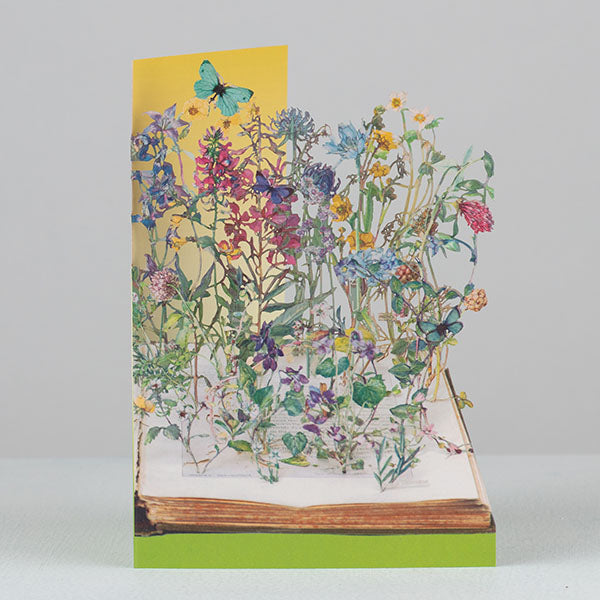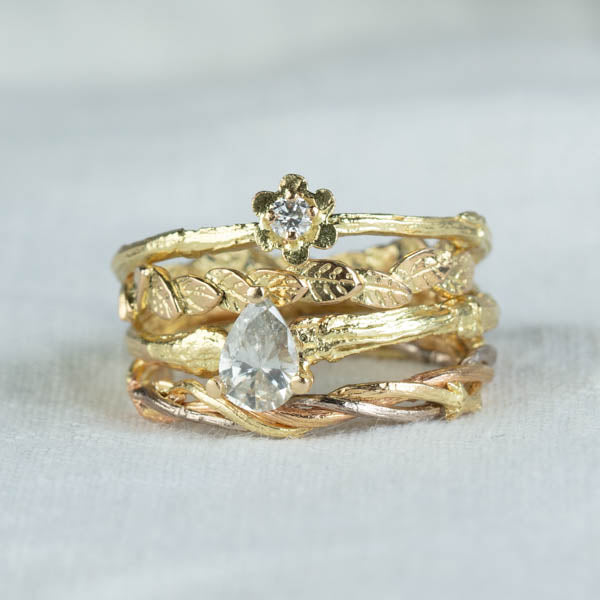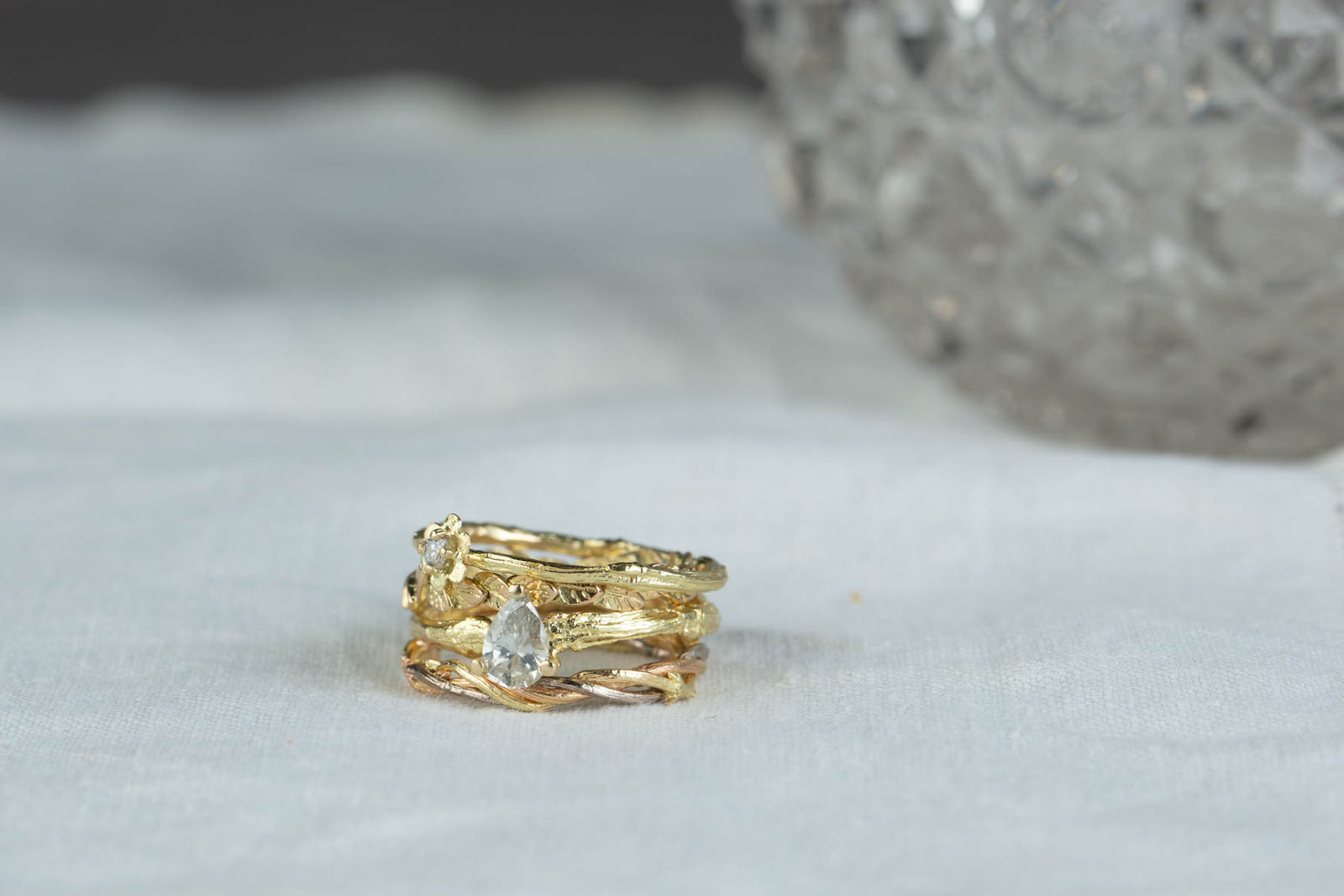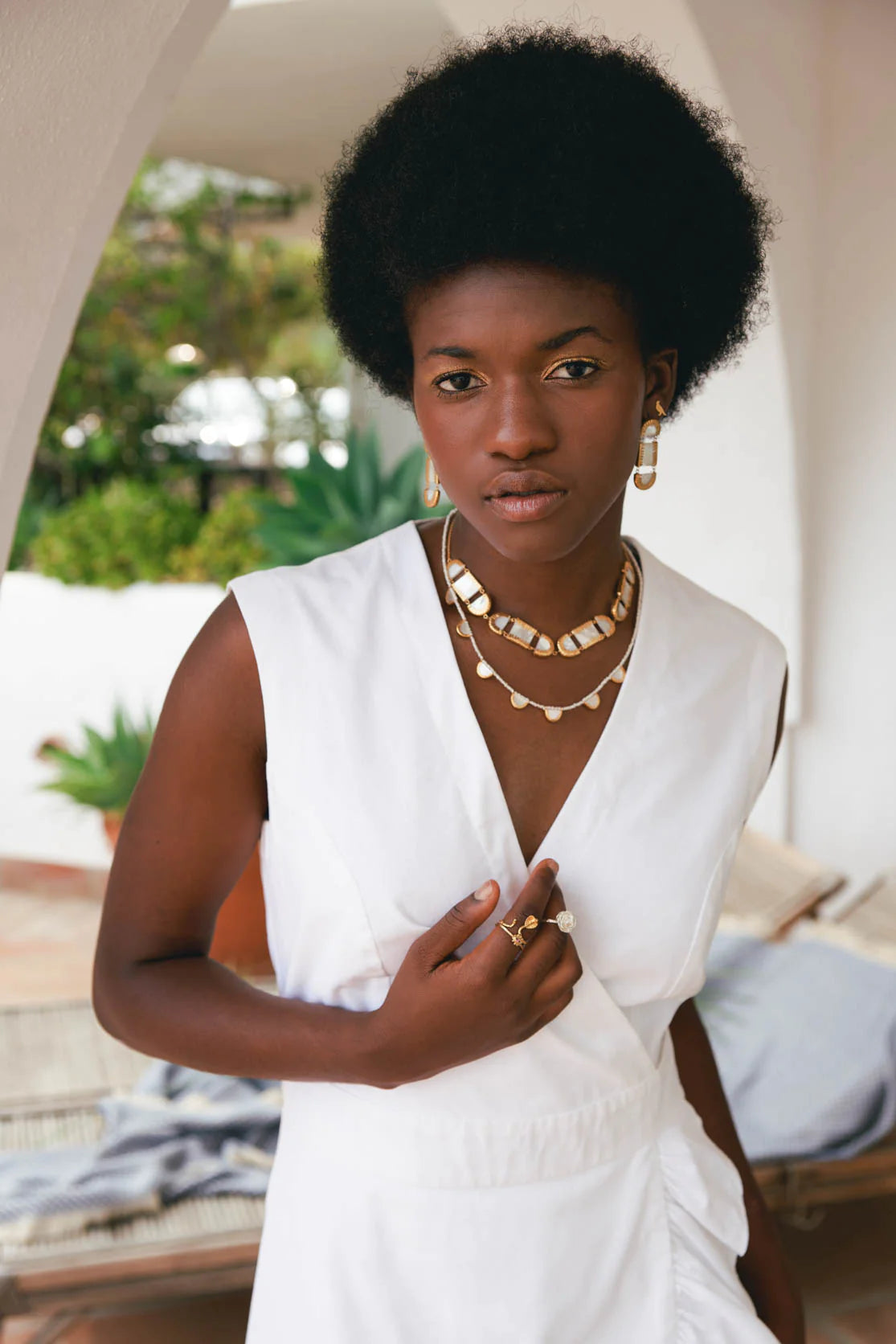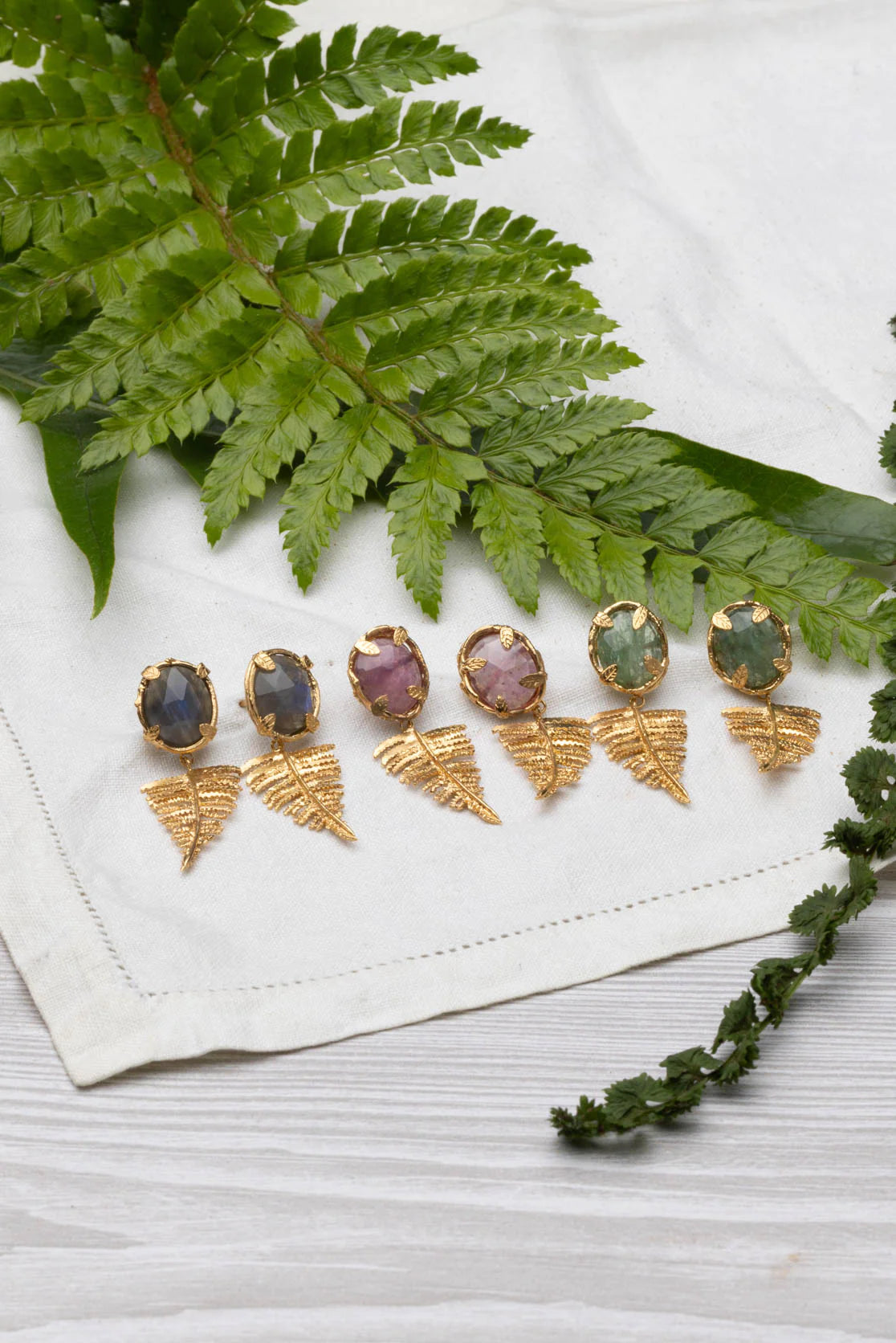When investing in jewellery, we tend to choose pieces that will continue to be part of our treasured collection for years to come. Over time, the financial value of jewellery can increase and it can become a precious heirloom to pass down in our families.
But taking care of your prized gems and jewels, including cleaning them, is crucial if you want to continue to enjoy them and maintain their value!
In this article, we’ll explore some simple and effective ways of taking care of your jewellery to make sure it maintains its sparkle for a long time!
Understanding the Different Jewellery Materials and Gemstones
Jewellery-making is an intricate art that incorporates various materials. Take a look at some common materials and gems used to make jewellery as well as what factors can affect their longevity.
#1. Gold
Gold is a highly popular material of choice in making jewellery. Not only is it malleable and soft, but it also doesn’t tarnish on its own. This means it’s much easier to put that shine and polish back into your gold jewellery even after decades.
What to look out for: Repeated exposure to bleach, chlorine, and other strong cleaning solutions can damage the alloys in your gold jewellery and can lead it to corrode sooner.
#2. Silver
Sterling silver is an affordable precious white metal. It is a popular choice for everyday use due to its hypo-allergenic properties, very few people have a reaction to solid sterling silver.
What to look out for:Various factors can increase the speed of silver oxidisation, causing the silver jewellery to darken in colour, like perfume, body lotion, and other self-care products that have chemicals in them. Air pollution and high humidity can also make your silver jewellery lose its sparkle and turn black.
#3. Gold Vermeil
Gold Vermeil is a term used to describe solid sterling silver jewellery that has been plated with gold. Vermeil will be a thick plating of gold and will not easily rub off when worn and because the material beneath the gold vermeil is solid silver, the wearer is much less likely to have a reaction to it when it wears away, as opposed to base metal jewellery plated with gold. Gold Vermeil is usually 18ct or 22ct yellow or rose gold.
What to look out for:The gold vermeil will eventually rub off the silver, the time this takes depends on how often the jewellery is worn and what type of jewellery it is. Rose gold vermeil is especially prone to discolouration due to the high copper content, it can react with the different ph balance of the wearer's skin
#4. Titanium
Titanium is one of the most rigid materials that make for fabulous jewellery. It doesn’t corrode, fade, or rust, even if subjected to the elements, making it a great choice for jewellery that can last a long time without adding unnecessary weight.
What to look out for:Once the titanium oxide coating of your titanium jewellery becomes damaged by constant scratches, it will start to corrode like any other metal.
#5. Platinum
Easily mistaken for white gold, platinum is a popular choice for engagement and wedding rings, especially with a diamond setting. It is stronger than gold and is naturally hypoallergenic, making it ideal for those sensitive to wearing any bling.
What to look out for:Cleaning products, beauty products like hair sprays, and regular exposure to chlorine can cause discolouration and damage to your platinum pieces.
#6. Stainless Steel
With its impressive strength, thanks to its carbon component, and rust-proof chromium content, you can’t go wrong with stainless steel. With this material, you don’t have to worry too much about your jewellery being too delicate and getting damaged because stainless steel jewellery is generally tarnish-resistant, scratch-resistant, and affordable.
What to look out for:Repeated and prolonged exposure to direct sunlight, chemicals, and saltwater can ruin stainless steel jewellery.
#7. Diamonds
Diamonds are stunning, tough, and a timeless classic. A simple diamond, cut and polished precisely, can elevate any basic chain or ring to new heights. And being the toughest gem, only another diamond can scratch a diamond.
What to look out for:Despite being exceptionally hard diamonds can chip especially if they have inclusions and flaws.
#8. Sapphire
A gemstone that’s often easy to spot because of its bright blue hue but it does come in an array of rainbow colours. Coloured stones like sapphire are not as hard as diamonds, so they need extra care to maintain their vibrancy.
What to look out for:If your coloured gemstone jewellery is exposed to chlorine, harsh chemicals, and even mild acids, including lemon juice, it can affect its colour and sparkle.
#9. Pearls
Pearls have had a reputation for many years of being rather old-fashioned, however, there has recently been a huge resurgence in pearl jewellery and they have become a favourite for creating a contemporary classic, effortlessly glam look. The value of pearls depends on their lustre, surface flaws, colour, and symmetry. But pearls are also very soft and need a lot of care and maintenance.
What to look out for:The lustre of your pearl is a major factor contributing to its value, so it’s important to protect pearls from cosmetics like sunblock and hairspray or chlorine. Even your perspiration can damage this natural gemstone.
The Best Ways to Clean Your Jewellery
Diamonds may be forever but, sadly, the jewellery that encases them doesn’t always last as long. Fortunately, we can maintain our jewellery’s shine and sparkle with regular cleaning and maintenance!
#1. Gold: Warm water, a detergent-free soap, and a soft-bristle brush are all you need to clean your gold jewellery.
#2. Silver: Use the following process using hot water, bicarbonate of soda and aluminium foil for an effective and eco-friendly process of cleaning jewellery:
- Put enough hot water in a heat-proof container to cover the jewellery
- Put into the water the aluminium foil - shiny side up and a generous helping of bicarbonate of soda - around 2 tablespoons, mix it up a bit
- Add the jewellery to be cleaned, ensuring it is touching the foil
- Leave it a few minutes until the tarnish has been removed
- Rinse and give the jewellery a buff with a silver cloth
#3. Gold Vermeil: Avoid cleaning gold vermeil jewellery as much as possible as it will cause the gold plate to rub away from the silver. If the jewellery becomes tarnished use a silver dip for a couple of seconds and rinse thoroughly. Dry the jewellery and give it a light buff with a polishing cloth. For Rose gold vermeil use Peek Polish.
#4. Titanium: Use warm water, a mild, detergent-free soap, and a soft-bristled brush to clean your titanium jewellery.
#5. Platinum: Warm water and mild soap are ideal for cleaning platinum jewellery, but you can also use jewellery cleaners specially formulated for platinum.
#6. Stainless Steel: A baking soda and water solution, a mix of hand soap and water, or a mixture of toothpaste and water all work for cleaning stainless steel.

#7. Diamonds: All you need is warm water and mild soap or ammonia-based household cleaner. Soak your diamond jewellery in this solution and gently clean it using a soft cloth or toothbrush.
#8. Sapphire: A solution of warm water and a cleaning agent like a mild dish soap will help you get the colour and sparkle of your sapphire back in no time.
#9. Pearls: Pearls are very delicate, so it’s best to stick to the most basic cleaning solution for your pearl jewellery — warm water and mild dish soap or baby soap. If you need to clean silver or gold vermeil next to a pearl then we have found the bicarbonate and aluminium foil method of cleaning jewellery (see the method above for cleaning silver) does not adversely affect the lustre of the pearl.
#10. Tourmalines and other semi-precious stones: semi-precious stones vary in their hardness and durability so always be very careful when cleaning the stones. We recommend a soft-bristled toothbrush and warm soapy water.
Easy Tips to Clean Any Jewellery
Here are some simple hacks to help you clean any jewellery:
- Read the cleaning methodology provided by your jewellery manufacturer. If it has specific instructions, follow them precisely.
- Consider investing in jewellery polishing cloth and cleaning solutions to take your cleaning to the next level.
- Jewellery with gemstones should be handled carefully, especially when different kinds of stone are used because each would have its own setting. Warm water and a gentle soap should be enough to get the grime and dirt off your pieces.
- Never scrub your jewellery. Instead, wipe, rub, or brush them gently without applying any force.
- After cleaning, always wipe your jewellery dry before storing it. Air drying is not recommended because it tends to leave unwanted water spots.
- You can protect gemstones in an item of jewellery you are cleaning by covering them with blu tac and not submerging them in the cleaning solution.
Getting Your Jewellery Professionally Cleaned
If a DIY solution doesn’t quite work, getting the help of a professional is always a smart move. Professional jewellers, with their experience handling different kinds of jewellery and the right tools and solutions, can restore the shine and quality of your pieces effectively and have them look like new again!
You know that your jewellery is best cleaned by a professional if:
- One piece has several gemstones set together or is made with different materials, each requiring a different maintenance approach.
- Your gemstone has lost its sparkle.
- You can see a build-up of dirt in hard-to-reach areas.
- The jewellery has too much tarnishing and discolouration.
- Some gemstones appear wobbly, or the claws are broken.
- Your DIY solutions do not restore the shine and overall appearance of your precious pieces.
- Silver is showing through on your gold vermeil pieces.
The Best Way to Store Jewellery
Believe it or not, storing your jewellery improperly can escalate your jewellery’s deterioration. But don’t worry; here are some tips to help you find the perfect spot to keep your jewellery safe:
- Your jewellery needs to be stored at room temperature, away from direct sunlight, draft, and cold.
- If you can invest in a climate-controlled storage unit, your jewellery will thank you for it.
- Never store any jewellery in plastic. Instead, use the cotton or silk jewellery bags they originally came with.
- Ideally, store all your pieces in separate compartments. Or keep all gold or other similar metals and gemstones in the same place.
- Leave somesilica gel packets in your jewellery storage unit to absorb excess moisture.
- Use plastic hangers to hang up your necklaces, earrings, and bracelets and prevent them from tangling.
Tips for Regular Maintenance
- Never sleep with your jewellery on. Remove it at night, clean it in real-time if possible, and store it properly.
- Avoid subjecting your jewellery to cosmetics, hair, and body care products, as some of them can damage your pieces.
- Remove your jewellery, especially if made from gold and silver, when you go swimming, especially in a pool. The chlorine added to the water can harm your jewellery and may lead it to crack and weaken the setting.
- Regularly check your jewellery for any damages that need to be repaired, such as broken chains, loose gemstones, or clasps and locks that need to be tightened.
- Remove your jewellery if you know you’ll be doing any physical activities like gardening or wall climbing.
- Another option I recommend to all my customers is to purchase Peek Cream Polish which can be used to clean, polish and protect the surfaces of silver, gold, rose gold, stainless steel etc.
Conclusion
For many, jewellery is a prized possession and needs to be treated as such. Regular cleaning and maintenance are necessary to keep our pieces in their best condition for longer. We hope this guide helps you maintain the shine and brilliance of all your jewellery, so you’ll always have your precious jewels and gemstones looking their absolute best!




